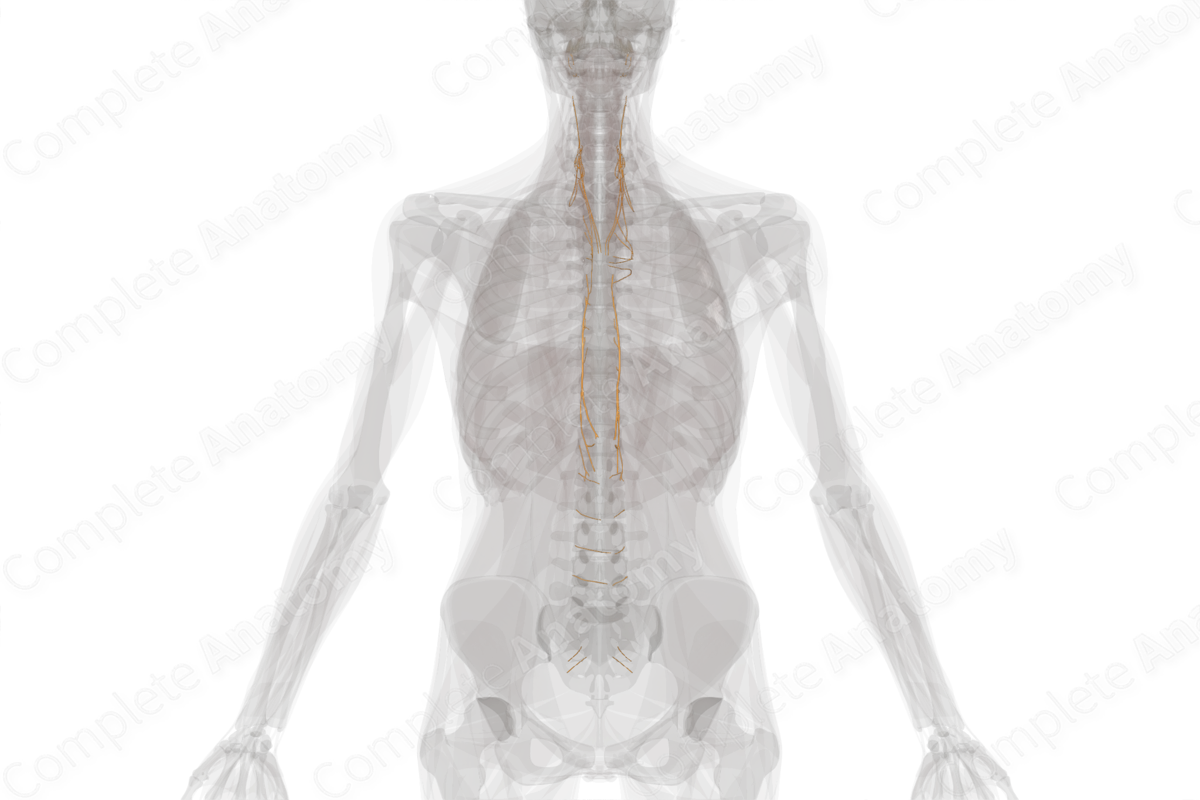
Description
Sympathetic nerves are efferent nerves that act on visceral targets in the periphery such as visceral organs, vascular smooth muscle, and sweat glands.
All sympathetic circuits are arranged in a two-neuron pattern. The preganglionic sympathetic neuron originates in the thoracolumbar region of the spinal cord, sends an axon out of the spinal cord, and synapses in a peripheral ganglion. The second sympathetic neuron is the postganglionic sympathetic nerve. This neuron is located in a peripheral ganglion, receives synaptic input from a preganglionic sympathetic neuron, and sends its axon out to the target tissue.
Pre-ganglionic sympathetic neurons send axons out via the T1 through L2 ventral spinal nerve roots. These preganglionic axons ascend or descend in the sympathetic chain to the appropriate level, then synapse with target neurons in the paravertebral ganglia or pre-aortic ganglia.
Sympathetic axons to the head travel up from the cervical ganglia via the carotid plexus before spreading out towards their targets. Axons going to the surface of the body follow spinal nerves to the periphery. Several cardiopulmonary splanchnic nerves send sympathetic axons to the heart and lungs in the thorax. The greater, lesser, and least splanchnic nerves are the sympathetic nerves originating in the thorax that penetrate the diaphragm, synapse on prevertebral (preaortic) ganglia, and target the viscera of the abdomen associated with the gastrointestinal tract. The sacral splanchnic nerves target the anus and pelvic viscera.
Related parts of the anatomy
Learn more about this topic from other Elsevier products
Sympathetic Nerve

The “solar plexus” refers to the sympathetic nerves and ganglia in the peritoneal cavity, with branches which supply nerves to the abdominal viscera.




